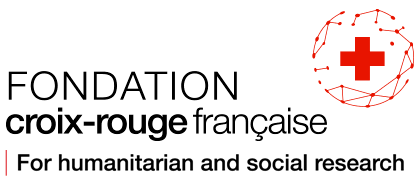MAJOR FACTORS CONTROLLING RISK CONCEPTS (FAMACOR): STUDY OF CONCEPTS LINKED TO NATURAL RISKS IN GUADELOUPE AND FACTORS INHIBITING THE DEVELOPMENT OF A CULTURE OF RISK.
This study provides elements of response regarding the level of knowledge and preparedness for risks of the Guadeloupean population, but will also identify ad-hoc action levers for defining targeted prevention actions. In addition, FaMaCoR provides an innovative dataset to extend the results over time, with an impact on strategies related to resilience, and other fields of action, in the Caribbean and beyond.
Characterizing conceptions related to natural risks in Guadeloupe
Within populations heavily exposed to hazards, such as the Lesser and Greater Antilles, the perception of natural risks and the understanding of the geological phenomena that govern them remains very little known. The rare studies that have looked at them reveal a weak risk culture, which is detrimental to the proper definition of mitigation policies and their effectiveness. The deficiency in preparation for a major hazard is one of the components of risk definition. The FaMaCoR project (Major Factors controlling Risk-related Conceptions) proposes a Geocognitions study aimed at identifying and understanding the psychosocial and sociocultural determinants that influence prevention and protection behaviors in the face of “natural” risks, and the appropriation of a sustainable risk culture by the Guadeloupean population, and in particular children/young people. This characterization ultimately makes it possible to better target and define operational educational strategies in terms of natural risks in order to reduce the gaps currently observed in preparation.
Difficulties in implementing a risk culture
The Caribbean is one of the regions in the world most exposed to the risks of natural disasters. This is particularly the case for the French territories of the Antilles. In recent decades, Guadeloupe has been affected by major natural disasters of various types: earthquakes, floods, hurricanes, etc. These major risks are exacerbated by various factors of vulnerability of the populations and the territory as well as by a process of climate change that influences the frequency and intensity of hazards.
Beyond this socio-environmental context, it is noted in particular that the risk culture is progressing with difficulty at the level of the populations and the knowledge of risks is heterogeneous, as is that of appropriate behaviors in the event of a disaster.
In light of this observation, PIRAC is launching a risk reduction project for the population, the project “Paré, pa Paré: all prepared for natural risks for a resilient Guadeloupe”, which aims to strengthen the resilience of the population by developing a risk culture among children, young people and adults.
A socio-anthropological study was necessary in order to adequately guide the development or adaptation of messages, educational tools/supports and awareness-raising activities that will be offered to the different audiences targeted by the project so that they assimilate a sustainable risk culture and adopt new behaviors for prevention and protection against the risks of natural disasters.
Identification of risk concepts needed to prevent new disasters
Guadeloupe has not recently suffered a major disaster, and is therefore in a situation comparable to that of Saint Martin before Irma (accustomed to less destructive cyclones) or Haiti before the 2010 earthquake (failure to consider seismic risk, although proven and known). From a purely scientific point of view, it therefore appears essential to carry out a major study of concepts now, in order to have elements of comparison, either with other comparable territories that have recently suffered a destructive event, or, later, if Guadeloupe were in turn affected by a major risk. The scientific community would then have a well-documented case study to study post-disaster resilience in the Caribbean and the impact of vulnerability mitigation measures.
Biography
Yves Mazabraud is a seismologist, specializing in telluric hazards, particularly in the Lesser and Greater Antilles. He has worked on the qualification and quantification of hazard and risk in metropolitan France and has also studied the seismicity of Taiwan. In addition, in the Antilles, since 2001, he has mainly worked in the Dominican Republic and Haiti, where he deployed the first seismological network in the country’s history, immediately after the 2010 disaster.
